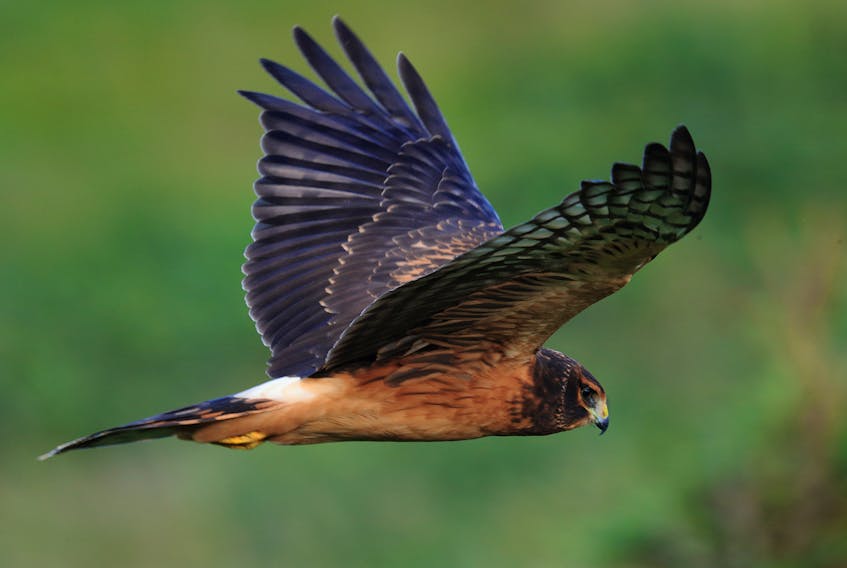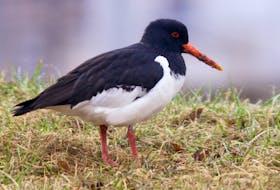Who does not like a three day weekend? The Labour Day weekend marks a significant turning point in the year for people and birds.
The summer vacation for school kids sadly comes to an abrupt end. The temperatures and sunshine waffle between summer and fall during September but it is typically a pleasant experience.

The growth of vegetation has slowed down to nearly a stop as it reaches a state of maturity. The brown seed heads of the tall grasses stand out among the still summer rich green. The leaves of trees are green but stray sprigs or yellow or maroon begin to appear. Purple asters and goldenrod flowers thrive along the road side ditches and abandoned lands as the pink flowers of the fireweed finish and turn to fluffy seed heads.
What are the birdwatching possibilities on this long weekend?
The insect-eating birds that came to the province to nest this summer are now leaving daily as they begin their journeys to warmer places.
A large portion of warblers, flycatchers and vireos will have left the province already. It is sad to see them go but it is necessary for their survival. They will be back next spring.
This weekend there will still be a few good flocks of roving warblers fattening up on their last feeds of Newfoundland insects before heading off to warmer lands in the south. At the same time a few warblers originating west and south of the province may stray off their migratory routes and end up on Newfoundland shores. Southern warbler surprises are likely to be found in the coastal alders starting this weekend.
Already Lisa de Leon found a rare prairie warbler from the south on the Cape Spear road.
Hawks are getting on the move. The young hawks have recently left their nests. They begin to move in a general south or southwest direction as they start migration. Most of them will eventually end up along the coasts sometime during their travels.
The young northern harriers are among the more conspicuous species of hawk. Their bright rusty-orange bodies glow in the sun as they cruise low over the ground hoping to surprise a vole or maybe a sparrow. The mighty little merlin is a commonly seen falcon at this time. It prefers to hunt in the open terrain terrorizing the sandpipers and plovers feeding on the beaches and kelp beds scattered along the shorelines. However, merlins spice up their late summer diet with dragonflies. The fast erratic flight of the dragonfly is no match for the agility of the merlin.
The young ospreys are freeing themselves of their nests and they too will be starting to move along the coast. Active birders will almost certainly encounter a few hawks on the move this Labour Day weekend.
The Labour Day weekend falls within the peak migration period of sandpipers, plovers and other shorebirds.
Birders will be seeking out some of the dry-field specializers. Flocks of American golden plover travelling from the Arctic to South America stop to refuel on berries on the barrens and insects found in plowed farm fields.
Birders are keeping an eye on a couple of plowed fields in the Goulds where some American golden plovers have recently shown up.
They are hoping a rare buff-breasted sandpipers will drop in with the plovers as they feed in the same habitats. Meanwhile, the beaches, tidal flats and stranded kelp beds attract their greatest variety of shorebirds at this time of year.
Richard Thomas found a Baird’s sandpiper at Biscay Bay. It is just rare enough that a Newfoundland birder never turns down a chance to get a view of this sandpiper that generally migrates west of Atlantic Canada.
There were no new rare birds discovered this past week. But the rare yellow-crowned night-heron first sighted in late July at Virginia Lake in east St. John’s has returned. This secretive heron can easily go undetected at a large lake. Virginia Lake has been a birding hotspot this summer.
Presently there is also a rare gadwall duck. It has been here for nearly two years. A female northern shoveler showed up for a few days.
A female hooded merganser was observed for just one day, and an unseasonable American coot has been there for several weeks now.
Other more common birds like the osprey and belted kingfisher are commonly viewed here.
The birder’s season of choice is the fall season. The long drawn out period of southward bird migration is interesting to watch. The season regularly brings Newfoundland and Labrador off course surprises. We look forward to the selection of surprises ahead in the fall of 2019.
Bruce Mactavish is an environmental consultant and avid birdwatcher. He can be reached at [email protected].
RELATED:









